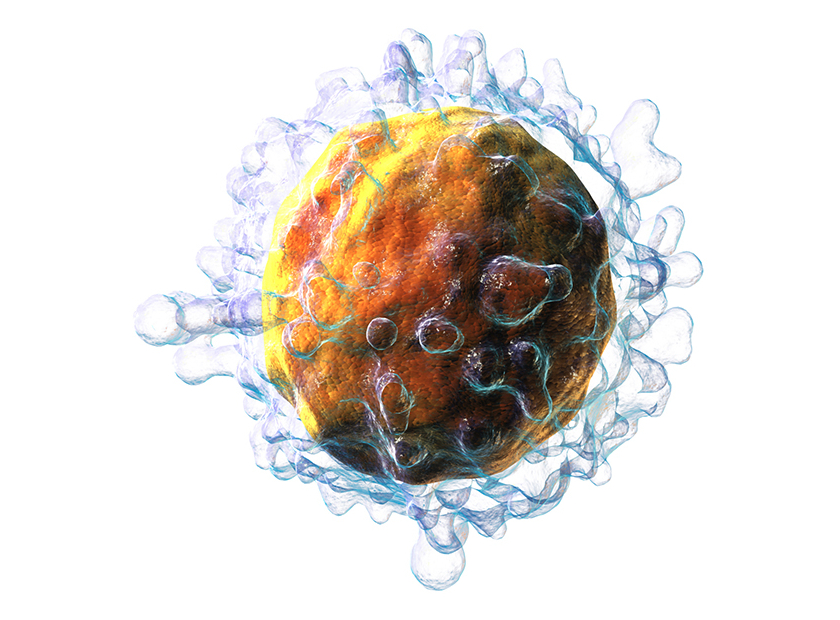Can a T Cell Test Predict Immune Status?
New Study shows that assays for T Cells against COVID-19 can be good predictor of disease susceptibility.
Ensuring that essential workers are healthy and can receive a vaccine against SARS-CoV-2 during the pandemic is extremely important. However, a major question must be considered: How can we identify which individuals are most at risk for severe COVID-19 infection? The answer to this question could start with a simple blood test for T cell immunity.
T cells originate in the bone marrow, but are matured in the thymus. However, they are not activated until they find their specific antigen, which in this case is the SARS-CoV-2 virus.
Increasing the number of immune T cells is crucial to clearing the SARS-CoV-2 virus from the patient's body. It has been shown that 95% of patients in ICU show an alarming decrease in T cell numbers. As we age, it is known that T cell function decreases. However, it is not known for certain if the decrease of T cells in COVID-19 patients is due to age or the cytokine response that could also impair T cell function. (4) Young people are less prone to severe infection due to their more robust T cell response and a lesser cytokine response in comparison to the elderly.
In a study by Oxford Immunotec Global and David Wyllie, nearly 3,000 first responders (police, fire, and healthcare workers) were evaluated for the antibody and T cell response to SARS-CoV-2. The T cell response to various SARS-CoV-2 proteins were determined using a research use only (RUO) T-SPOT Discovery SARS-CoV-2 assay (Oxford Immunotec, Oxford, England). The cumulative responsiveness of T cells to the spike (S), nuclear (N) and membrane (M) proteins was measured, and workers were placed into a high or low T cell response group.(1,2)
None of the participants with a high T cell response developed symptomatic SARS-CoV-2 infection in the follow-up period, whereas amongst those with low T cell responses, there were 20 confirmed infections. From the high T cell response group, about half of the individuals also had detectable antibodies against the N or S proteins. These results suggest that T cell assays may be able to predict the risk of patients becoming sick with COVID-19.(1,2) It also indicates that a T cell assay could be a far better predictor of immune status than an antibody test (either IgG or IgM).
Unfortunately, the numbers of individuals with a high T cell response to SARS-CoV-2 were shown to decline with increasing age; this may be another factor that could put the elderly at risk for a high severity of illness or fatality.(1,2,3) The results from this study are most important to consider for essential workers. In this case, those who may be at higher risk of infection by COVID-19 should take extra precautions while working in shared workspaces.
Hopefully, this type of diagnostic test can be used beyond an RUO setting and become implemented into standard clinical care to help essential workers and the general community identify individuals most at risk for COVID-19. In the near future, these high-risk individuals will also benefit from the three recently developed vaccines.(Figure 1)
Learn more about T Cell Tests for COVID-19.
Written by Anna Klavins
Meet the author

SENIOR TECHNICAL SERVICES AND R&D MANAGER at HARDY DIAGNOSTICS
Anna Klavins, RAC-Devices, B.S Cellular and Molecular Biology
Anna Klavins is the Senior Technical Services and R&D Manager at Hardy Diagnostics where she oversees the Research and Development, Design and Development, Quality Control, Technical Support, and Performance Studies teams. She earned a Molecular and Cellular Biology B.S. degree from Cal Poly San Luis Obispo while playing for the Division I NCAA women’s tennis team. Since joining Hardy Diagnostics in mid-2016, she has authored sixteen FDA 510(k) submissions for class II microbiology in vitro diagnostic devices. She has published in the Journal of Clinical Microbiology and the Journal of AOAC INTERNATIONAL, as well as presents in vitro diagnostic device performance evaluation results annually at global scientific conferences such as ASM Microbe, the AOAC Annual Meeting, and the International Association of Food Protection annual meeting. She is an advisor to the Joint CLSI-EUCAST Working Group and has earned the RAC-Devices certification.







